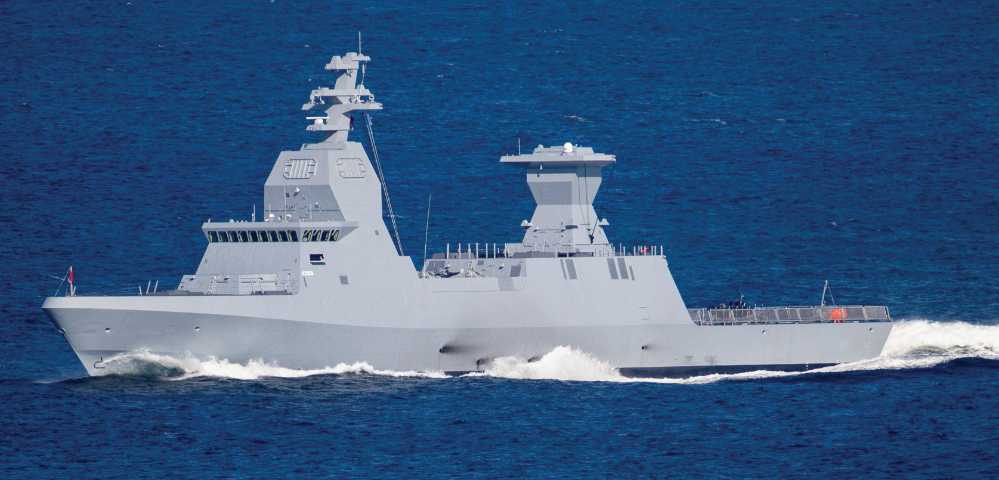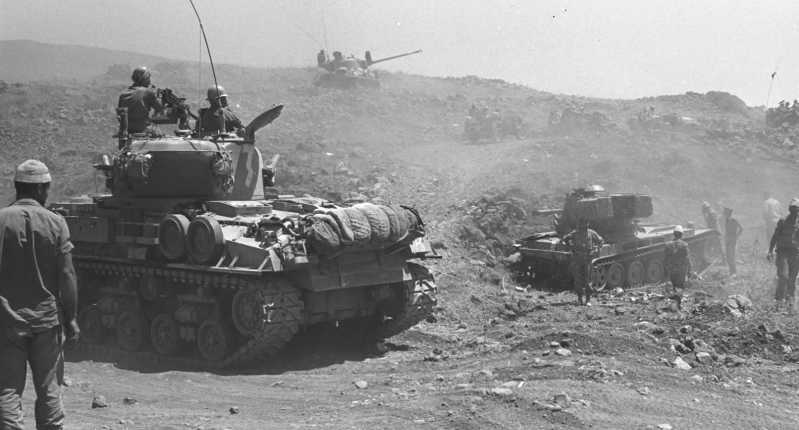In the ever-changing Middle East, any news of major military development will touch the sensitive nerves of all parties concerned. In recent years, the international situation surrounding Israel, a military power in the Middle East, has become more complicated, and domestic security issues have also emerged one after another. In response, Israel has actively adjusted its national defense development strategy, and its naval and air force equipment development has continued. Compared with the glorious record of the army and air force, the navy is much more low-key in the combat sequence of the Israeli armed forces. In terms of naval equipment development, Israel is currently facing a fierce arms race among neighboring countries. The comprehensive strength of the navies of Arab countries such as Egypt, Saudi Arabia, Algeria, Morocco, Qatar, and the United Arab Emirates has risen rapidly in recent years. These countries have continuously purchased advanced naval equipment from Western countries, especially Egypt, which is close at hand. In recent years, it has successively purchased a series of advanced equipment such as Ambassador-class missile boats, Chasing Wind-class and Aquitaine-class MEKO A200 missile frigates, Mistral-class amphibious assault ships and Type 209 submarines, and the technological leading advantage that the navy has maintained for many years has been continuously squeezed. Compared with the development of the maritime armed forces of neighboring Arab countries, the development momentum of the Israeli Navy has been in a state of being rapidly caught up in recent years. The "double trump cards" consisting of the "Saar" 5-type light frigate and the Dolphin-class conventional submarines were once enough to shock a number of Arab countries. Now both have been in service for more than 20 years. Facing the comprehensive rise of the navies of neighboring Arab countries, they are aging and cannot maintain their original advantages through modification and upgrading. Where will the Israeli Navy go? What kind of Jedi counterattack will it launch?
Concept of new ships
The Middle East has the most complex maritime combat environment today, with both traditional armed threats and non-traditional threats such as terrorist attacks. Faced with the increasingly deteriorating maritime strategic environment, Israel is also speeding up the formulation of a renewal and development strategy for the navy’s main combat equipment, covering the core equipment of surface and underwater forces, including the ordering of the second batch of Dolphin-class submarines and the "Saar" 6-type new generation light frigates that have long attracted the attention of various countries. The latter will fully demonstrate Israel’s "hard core" strength in the research and development of naval weapons and electronic technology. In terms of comprehensive strength, the Saar 6 will represent the highest level of development in the Saar family. Let’s take a look at what new strength the Saar 6 will bring to the Navy.
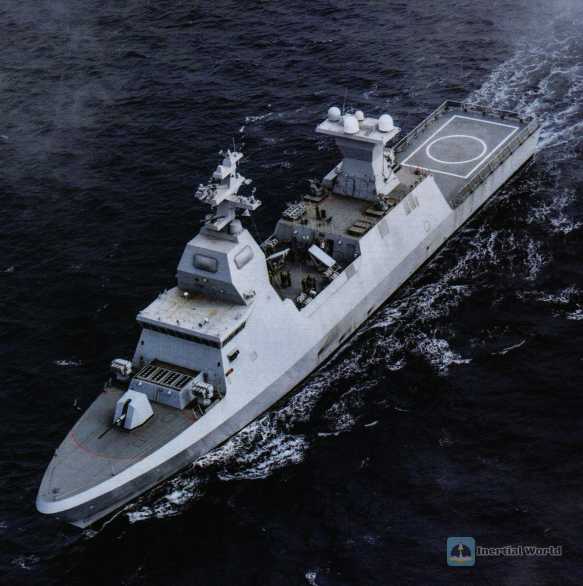
Since its establishment, the Israeli Navy has been closely related to the financial assistance of Western countries in the development of its core equipment. From the Saar series missile boats to the Saar 5 light expansion and then to the Dolphin-class submarines, Israel has rationally and efficiently used the aid funds from Western countries to build a large number of "high, precise and cutting-edge" weapons on the water/underwater. At the beginning of the planning of the Saar 6 type, the shrewd Israelis certainly thought of "borrowing power" to give birth to it. After all, in terms of weapon system research and development, although Israel has the most complete defense industrial system in the Middle East, if it wants to independently undertake the research and development of a new type of light frigate, it seems to be unable to do so in terms of financial strength and research and development technology. Making full use of Western countries’ technical and financial assistance, finding a suitable ship platform, and transplanting Israel’s domestically developed cutting-edge weapons and electronic equipment systems have become the only way to quickly and efficiently build a new type of warship that meets Israel’s actual needs.
In order to find a suitable ship platform, the Israeli army has successively conducted detailed comparisons and inspections and evaluations on excellent platforms such as the US Navy’s Freedom-class littoral combat ship, the French "Wind Chaser" 2500 series frigate, the German K-130 Brunswick-class light frigate, and the South Korean Daegu-class frigate. Given that only the United States and Germany are willing to provide defense procurement subsidies to Israel, this determines that Israel can only order the warships it wants from these two countries, and the Freedom-class and Brunswick-class have entered the final competition. After weighing the pros and cons, Israel finally decided to use the smaller version of the German MEKO series modular frigate, the MEKO A90, as the basic platform for the Saar 6. It is based on the mature Brunswick-class platform and has been greatly optimized. Both its technical performance and operating environment perfectly meet the tactical design requirements set by the Israeli Navy. Its victory is well deserved and well-deserved.
On December 25, 2014, Israeli Prime Minister Netanyahu officially announced that in order to enhance the maritime defense force, four new surface ships would be purchased from Germany, and pointed out that this military procurement plan was supported by financial subsidies from the German government. It was Germany’s "generous" financial assistance that enabled the early plan of the Saar 6 to be implemented efficiently and quickly. In May 2015, the Israeli military and Germany’s ThyssenKrupp Maritime Systems (TKMS) formally signed a contract to build four Saar 6-type ships, with a total value of about 1.8 billion new shekels (about 430 million euros, of which 115 million euros were provided by Germany’s financial subsidies). It can be seen that the cost of a single ship of "only" about 100 million euros is "extremely cheap" in today’s high-cost and soaring military trade market. This is due to both the financial subsidies provided by Germany and the cooperation model agreed in the contract between the two parties that Krupp Maritime Systems will only undertake the construction of the hull platform and power system, and Israeli companies will be responsible for the procurement and system integration of shipborne weapons and radar electronic equipment. So far, the Israeli Navy’s new generation of surface ships "Saar" 6-type light frigates have officially entered the project implementation stage.

Construction Overview
However, after the signing of the construction contract, the overall advancement efficiency of the plan was not high and the progress was relatively slow. The main reason was that Israel made some adjustments to the design of the "Saar" 6 and put forward some new tactical requirements, such as further strengthening air defense capabilities. Therefore, it was not until February 15, 2018 that the groundbreaking ceremony for the first ship was held at the Deutsche Werft owned by ThyssenKrupp Maritime Systems in Kiel, the capital of Schleswig-Holstein, a famous shipbuilding industrial city in northern Germany. The ceremony was attended by Admiral Elishar Witte, Commander-in-Chief of the Navy, accompanied by Vice Admiral Andreas Kraus, High Commissioner of the German Navy, and the first steel plate of the ship was cut together.
As the "direct descendant" of the MEKO series, with the blessing of the modular construction model that the family is famous for, the construction speed of the first ship of the "Saar" 6 type was very fast. Seven and a half months later, on October 1, 2018, the ship completed the closure of all hull sections on the indoor slipway of the Kiel Shipyard, and its launch is just around the corner. For this reason, many Israeli media rushed to the shipyard to conduct interviews to record this historic moment. This is also the first time that the news media has been allowed to report to the outside world on the technical status of this type of ship after the start of construction. It can be seen that Israel has a very high degree of confidentiality in the construction process of this type of ship.
In April 2018, the Israel Defense Forces rarely announced the names of all four "Saar" 6-type ships at one time. The first ship was named "Ins Magen" after the Jewish symbol "David’s Star" (i.e. "Magen"), the second ship was named "Compatriot" (INS Oz), the third ship was named "Independence" (INS Atzmahut), and the fourth ship was named "Victory" (INS Nitzachon). On May 11, 2019, it was a day worth recording in the history of the development of Israeli naval equipment. The "Ins Magen" held a launching ceremony, announcing the official return of Israeli naval surface combat ships. Ton era. Considering the current severe security situation in Europe, the German police provided strict security measures for the first ship after it was launched. Fully armed patrols and ships were deployed in the blocks around the shipyard and nearby waters. On May 23 of the same year, the ship held a formal naming ceremony, after which it continued to be outfitted and carried out various tests. In March 2020, the "Hexagram" completed its first sea trial in the Baltic Sea; on November 11, the ship was officially handed over to the Israeli Navy at the German Shipyard. The Israeli flag was raised on the ship, but weapons and electronic equipment had not yet been installed. It is planned that after returning home, Israeli companies will complete the installation and testing of these systems. On December 2, 2020, the ship arrived at the Port of Haifa,
On August 23, 2019, the "Compatriot" was launched, and on May 4, 2021, the ship was handed over to the Israeli Navy. On July 27, 2021, the "Independence" and "Victory" were delivered at the same time. So far, all four ships have been delivered, and it is expected that all of them will be operational around 2024.
In January 2023, the recently commissioned "Compatriot" participated in the US-Israel "Juniper Oak 2023" joint military exercise, demonstrating its strong combat effectiveness. As the most advanced surface ship in the surrounding area, it is also regarded as a "thorn in the eye" by hostile countries. In the recent exercises in the Gulf of Oman, Iran used drones to simulate attacks on targets similar to the "Saar" 6.

Detailed performance explanation
Overall layout
When it comes to naval vessels, the "Saar" series can be said to encompass the core veins of its historical development. It is famous for its excellent and practical industrial design, powerful armament and excellent combat record. Starting with the "Saar" 4 missile boat, the family began to enter a mature development stage, gradually getting rid of the original German design. Israel has exquisitely combined the hull platform with its own developed weapons and sensor systems, and its comprehensive combat capability has become stronger from generation to generation. The "Saar" 6 is no exception. Both the radar stealth performance and the weapon system performance have been greatly improved and upgraded compared with the previous generation. It can be said to be one of the most capable surface ships in the Middle East. I believe that if readers have seen the previous imagination and actual status of the "Saar" 6, they will definitely have a sense of déjà vu.
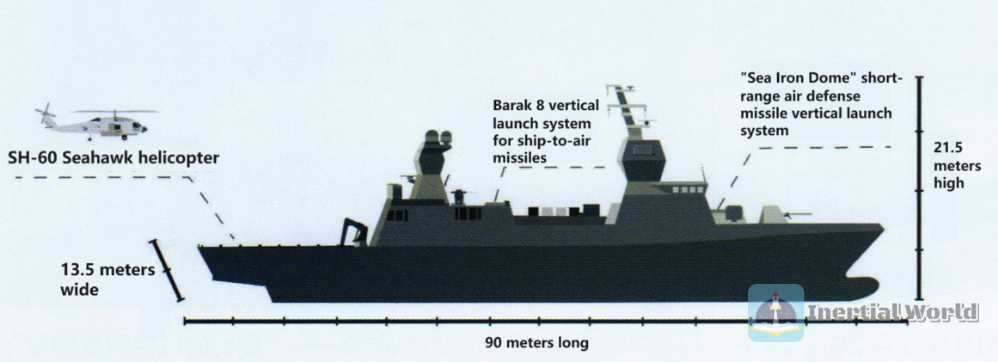
At present, the specific performance data of the "Saar" 6 has not been announced. It is speculated that its standard displacement is about 1,900 tons, its full load displacement is about 2,100 tons, its length is about 90 meters, its width is about 13 meters, and its maximum draft is about 4 meters. According to the positioning of the navy, the "Saar" 6 is not developed as a successor to the "Saar" 5, but is used to replace the "Saar" 4.5 missile boats, which are in large numbers and increasingly outdated in performance. However, it still inherits many design concepts of the "Saar" 5. The difference between the two in the appearance of the ship is mainly reflected in the size and stealth design details. Unlike the "Saar" 5, which was later modified and upgraded with phased array radar, the "Saar" 6 realized the installation of phased array radar at the beginning of its design. For a long time, phased array radar has been used as one of the indicators to measure the comprehensive performance of surface ships. Although the views of each country’s navy on this are different, objectively speaking, the addition of the new phased array radar has indeed brought a significant improvement to the comprehensive combat capability of the "Saar" 6. In view of the large increase in tonnage and size compared to the "Saar" 5, the comprehensive performance of the "Saar" 6 platform has been further optimized, and the functional areas are more reasonably set up, including more spacious living and activity space for crew members, a larger helicopter deck and hangar, and more sufficient and complete firepower configuration. The aviation support capability has been upgraded from only being able to carry "Dolphin" helicopters to being able to meet the take-off and landing and maintenance needs of the SH-60 "Sea Hawk", and can provide a higher and wider field of view navigation bridge area.
The new ship still follows some features of the "Saar" series in terms of appearance design details. The ship is compact and simple in layout. The ship is very beautiful and elegant. The exaggerated and powerful armament setting makes people recognize it as a naval ship at a glance. In order to create a more coordinated and integrated ship design aesthetic, and at the same time to reduce the infrared characteristic signal of the entire ship, the "Saar" 6 type abandoned the traditional chimney design of the "Saar" 5 type and adopted the flue exhaust design near the waterline. Most of the high-temperature exhaust gas discharged by the main engine system is diluted and masked by the waves stirred up by the sailing, which greatly reduces the exhaust gas temperature and ensures a lower level of infrared characteristic signal for the entire ship. Compared with traditional chimney exhaust, the side waterline exhaust scheme adopted by the "Saar" 6 type has been increasingly adopted by more and more small and medium-sized surface ships. A bow thruster is set below the bow waterline, which can greatly enhance the operational performance of this type of ship in narrow waters.
The overall design layout has been optimized by subtraction, and the external equipment has been greatly simplified, especially the bow design is very colorful. The fully enclosed design is not only beautiful but also more effectively improves the radar stealth performance. The center of gravity of the whole ship is lower, which is of great benefit to improving navigation stability and improving seaworthiness, and the hull connection is more integrated. More importantly, in order to cater to the current trend of long-term deployment of small and medium-sized surface ships, compared with the prototype ship, the "Saar" 6 type has enlarged the ship size as a whole, increased the displacement, and redesigned the cabin layout and protection design, making the crew officers and soldiers more comfortable and efficient in daily operations and long-term sea deployment. The larger hull space also reserves ample space for future upgrades and modifications.
It can be seen that the "Saar" 6 type not only inherits the excellent MEKO family genes, but also has a clear Israeli "heavy armed" style imprint. The research and development companies have carefully crafted the design details, showing the profound heritage of a veteran ship industry power. It is no exaggeration to say that although the "Saar" VI is developed based on the Brunswick class, there are obvious differences in appearance between the two. Considering the armament, radar and electronic systems, it is almost the same as a newly developed ship.
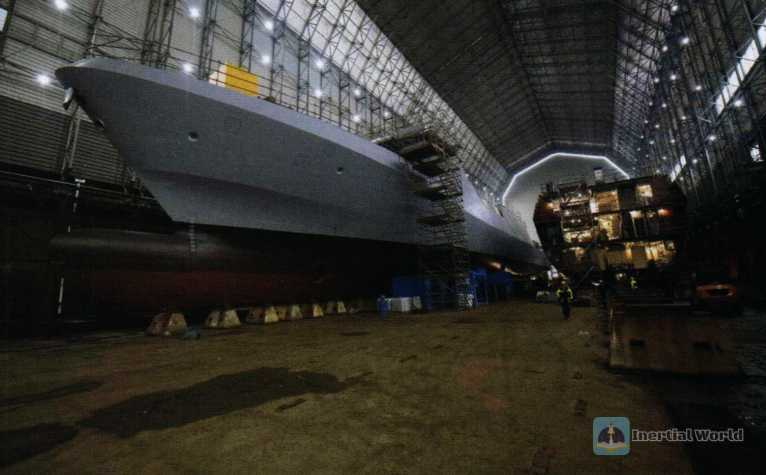
Power system
The "Saar" series originated from missile boats, and has always had high requirements for outstanding maneuverability, high speed and long-lasting endurance. The maximum speed is generally above 30 knots. The maneuverable and flexible characteristics often enable it to occupy more tactical advantages in narrow waters such as the Mediterranean and the Red Sea. With a significantly larger tonnage and size than the Saar 5, the Saar 6 needs a more powerful power system. Although its power system continues the basic configuration of the Brunswick class, consisting of two diesel engines produced by the German MTU company and using dual-shaft and dual-propeller propulsion, the main engine output power has been greatly increased to achieve a higher speed. Each main engine is connected to the propulsion shaft through a gear reduction device, which in turn drives two 5-blade variable pitch propellers. At present, many of the power systems of the new generation of small and medium-sized surface ships of Western naval powers have adopted "popular" designs such as integrated electric propulsion systems and water jet propulsion devices, but the Saar 6 type did not blindly "follow the trend" to pursue "high-end", but adopted the mature and reliable all-diesel power system of the Brunswick class. Although it is slightly conservative, it is very beneficial to reduce the risk of development and quickly generate combat effectiveness. This also reflects the pragmatic side of the Israeli army in the field of equipment development that has always been close to national conditions.
Thanks to the well-designed and excellent MTU diesel engine system, the output power of the Saar 6 is more than 30% higher than that of the Saar 5. However, due to the significant increase in displacement, the maximum speed is still not expected to exceed the Saar 5 (33 knots) using the LM-2500 gas turbine as the main engine, and is estimated to be around 28 knots. However, today, when the impact of high speed on combat performance is getting smaller and smaller, this speed can basically meet the needs of high-intensity mobile operations. Thanks to the increased hull space, it can carry more fuel. The endurance of the Saar 6 is expected to exceed the 3,500 nautical miles/17 knots of the Saar 5, reaching 4,500 nautical miles/17 knots, with a maximum sea endurance of 30 days. Considering the actual combat needs of the navy, this is completely acceptable and can already meet the needs of long-term and high-intensity maritime deployment in the Mediterranean and Red Seas. In addition, this type of ship has a staff of 70 people and a high degree of automation.
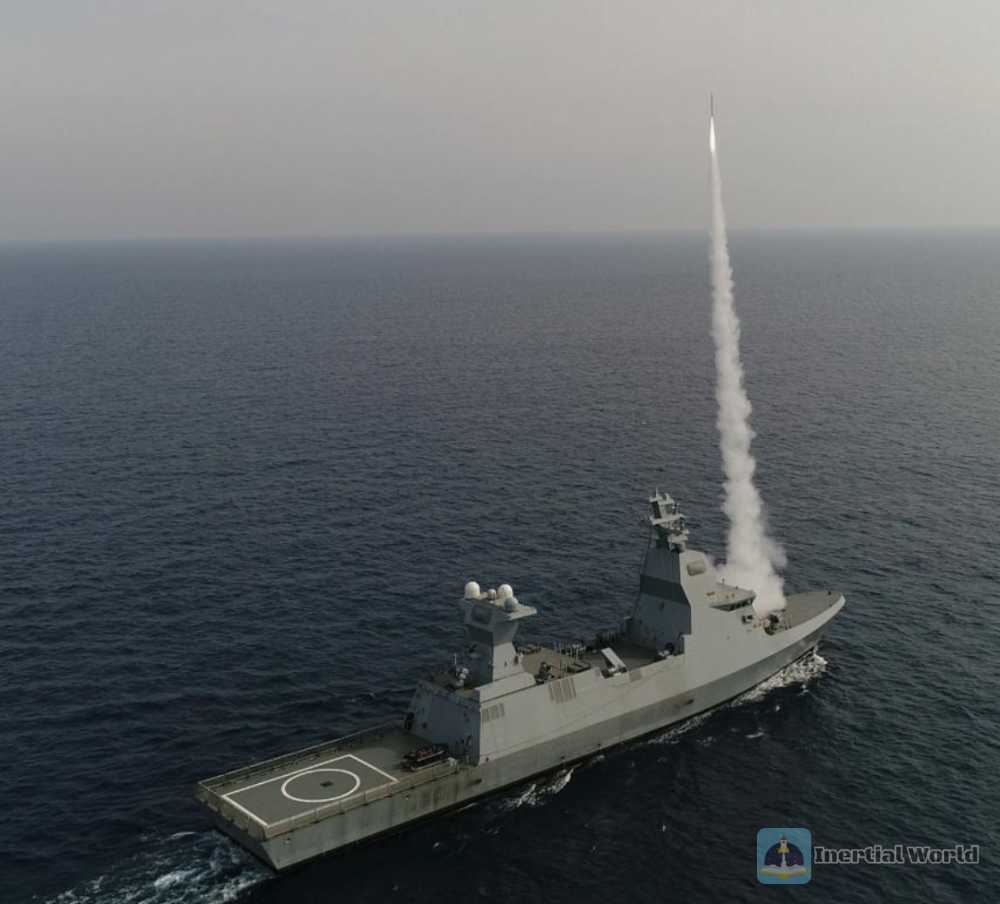
Weapon system
The "Saar" series has always focused on highlighting highly dense style elements in firepower configuration. The combination of weapon systems at different levels meets different attack and defense needs, and plays a soul role in stabilizing the battlefield situation in tactical clusters, so as to demonstrate the backbone temperament of being independent. The density of the "Saar" 6 weapon system is even better than that of the "Saar" 5. The ratio of various weapons and displacement of the whole ship has reached a new high. The air defense capability and anti-sea strike capability have been comprehensively strengthened, and the performance of radar and electronic systems has also kept up with the world’s first-class level. The unique multi-layer air defense combat system, first-class radar electronic equipment and powerful anti-sea strike capability of the "Saar" 6 type have surpassed the traditional tonnage level positioning, and can demonstrate strong combat capabilities in different threat environments and different combat waters.

1. Air defense weapons. Learning war in war is an excellent tradition of the Israeli army. Through the study of contemporary regional conflicts, it is shown that even for surface ships with very complete combat functions, improper tactical use and blind confidence in weapon performance often bring extremely painful lessons. The 2006 Lebanon-Israel conflict strongly illustrates this point. During this period, the "Saar" 5 "Hani" was injured by a shore-based anti-ship missile armed by the Lebanese Hezbollah off the coast of Beirut. Although there are many different opinions on the reasons for the attack on the ship, it is an indisputable fact that its air defense system failed to play an effective role under the wartime mechanism. In this regard, strengthening air defense combat capability is the primary task of improving the comprehensive combat capability of the "Saar" 6.
In fact, through the long-term use of the "Saar" 4.5 and "Saar" 5, the Israeli Navy found that the "CIW" close-in defense gun arranged at the bow A gun position has a wide firing range, but occupies the precious main gun installation space, sacrificing the multi-task flexibility of the 76 mm main gun, and its role in improving the overall air defense capability of the entire ship is limited to terminal air defense. Therefore, on the "Saar" 6, the 76 mm main gun at the bow A gun position has returned, which can undertake the whole ship’s medium and short-range air defense, the attack on small and medium-sized targets at sea, and the firepower support on the opposite shore, further optimizing the strike firepower system.
1 32-unit "Barak" 8 (also translated as "Lightning" 8) air defense missile vertical launch system is installed at the bow gun position B. The system is mainly used to perform regional air defense interception tasks. It has been equipped on the modified "Saar" 5 type. Its installation has allowed Israeli naval surface ships to enter the era of regional air defense. "Barak" 8 uses a dual-pulse solid fuel engine and a "high-throw trajectory + low-speed" flight mode, but its flight speed is slow (less than 1.8 Mach on average) with a range of 70 kilometers and a missile weight of less than 300 kilograms, which is less than 1/2 of the US Navy’s "Standard" 2 type. It is used to intercept targets such as aircraft, anti-ship missiles, and short-range tactical ballistic missiles. It is currently one of the lightest medium-range ship-to-air missiles in naval ships of various countries. At present, the extended-range "Barak" 8ER with a rocket booster and a range of 140 kilometers is under development. The "Saar" 6 will be replaced during the mid-term upgrade, when the performance potential of the EL/M-2248 phased array radar will be more fully utilized.
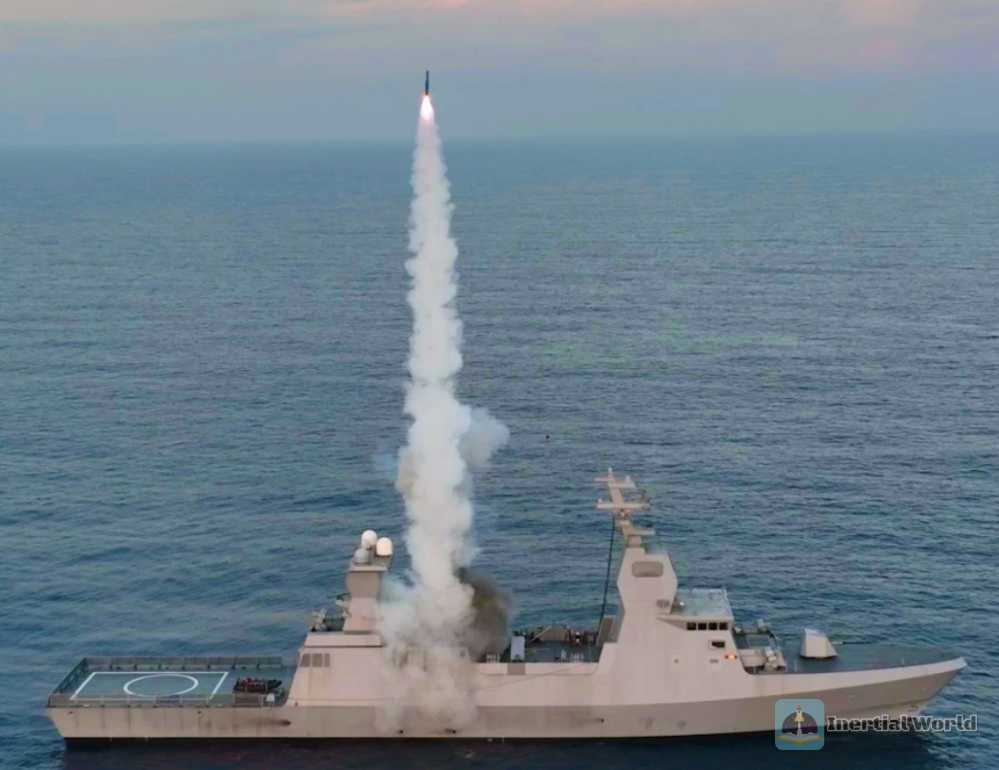
For the Israeli army, which maintains a high level of combat readiness all year round, any defects in the performance of the weapon system are unacceptable. After all, even a one-second absence of the air defense system can lead to the annihilation of warships and even the entire fleet in today’s unprecedentedly fierce sea and air battlefield confrontation. The tragedy of the "Hanit" deeply alerted the Israeli Navy. Therefore, in the development process of the "Saar" 6, strengthening the terminal air defense is a key point. After abandoning the classic "Phalanx" system, Israel had to find another way in the close-range air defense of the whole ship.
The "Saar" 6 type is equipped with a set of 20-unit "Sea Iron Dome" short-range air defense missile vertical launch devices with a total of 40 units on both sides of the front end of the helicopter hangar in front of the rear mast, using the "Tamir interceptor missile". The system is developed based on the land-based "Iron Dome" interception system, optimized for the shipborne environment, and changed from inclined launch to vertical launch. It completed shipborne testing and was delivered at the end of 2017. The addition of the "Sea Iron Dome" system further enriched the air interception firepower level of the "Saar" 6. In February 2022, the first ship "Hexagram" successfully tested the system, and the interceptor missile accurately hit the target. In November 2022, the second ship "Compatriot" completed the "Sea Iron Dome" interception. The final phase of the Iron Dome test simulated real threats and successfully intercepted a variety of incoming targets, marking its official service. In years of research and development and actual combat testing, the Iron Dome system has demonstrated strong and reliable interception performance. It has withstood the intensive attacks of large-scale unguided rockets launched by Hezbollah in Lebanon and Hamas in Palestine, and has always maintained a high interception rate. The Iron Dome system has also become the world’s most combat-intensive and effective close-range interception system, and has made great contributions to ensuring the safety of Israeli citizens and property.
The Tamir interceptor uses infrared guidance and weighs only 90 kilograms. It can intercept tactical missiles, rocket-guided bombs, mortar shells and large-caliber grenades within 20 kilometers. Although this unique air defense system was born in the complex battlefield environment of the Middle East, it has a wide range of battlefield adaptability and can become an effective weapon for naval surface ships of various countries to deal with non-traditional air threats.
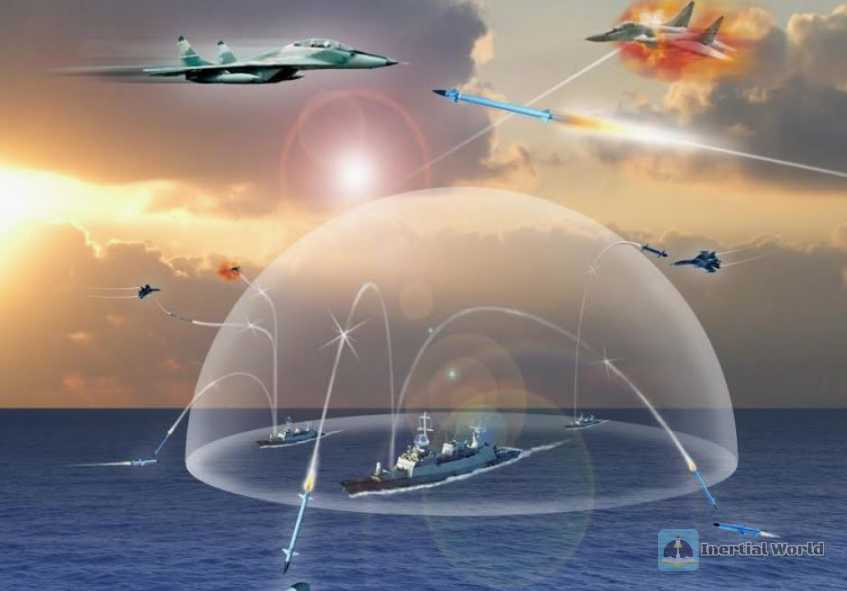
2. Anti-ship weapons. When talking about the supporters of heavy firepower of surface ships, people often think of the Italian and Soviet/Russian navies, but often ignore Israel’s achievements in this regard, which are even better than the latter. In order to further enhance the firepower of sea strikes, the "Saar" 6 is equipped with 4 4-mounted anti-ship missile launchers and 16 anti-ship missiles. It is very rare to equip a surface ship of this tonnage level with such a high density of anti-ship weapons, even exceeding the destroyers and frigates of most European naval powers. This move is regarded as a direct response of the Israeli Navy to the continuous equipment of new surface ships by Egypt and other countries. At first, according to the propaganda materials of the Israeli army, the anti-ship missile used by the "Saar" 6 was Boeing’s RGM-84L "Harpoon", rather than its own more compact "Gabriel" 5. As a classic anti-ship missile in Western countries, the platform adaptability of the Harpoon is also outstanding. In addition to being able to deal with surface targets, it can also be used to attack land targets when necessary. Its great potential for modification and upgrading, outstanding combat performance and excellent multi-purpose performance are the reasons why it has won the favor of the Israeli army. However, the subsequent situation has reversed, and Israel has re-selected the Gabriel 5 as the anti-ship missile of the Saar 6 type. On September 21, 2022, the Israeli army posted a video on Twitter of the "Compatriot" test-firing the Gabriel 5 in August 2022, and the missile accurately hit the target ship. This is the first anti-ship missile test of the Saar 6 type, mainly to carry out the integration test of the Gabriel 5 and the ship’s combat management system, but the Israeli army still keeps confidential the details of the shooting area, target situation, shooting distance, etc.
In addition, the "Saar" 6 type also has a Rafael Defense "Typhoon" 25mm automatic weapon station installed on both sides of the helicopter hangar in front of the rear mast. Depending on the situation, each weapon station can also be equipped with 4 "Spike multi-purpose missiles" to effectively deal with small sea targets such as high-speed suicide speedboats and small missile boats. This type of weapon station is very suitable for the current special combat environment in the Middle East.
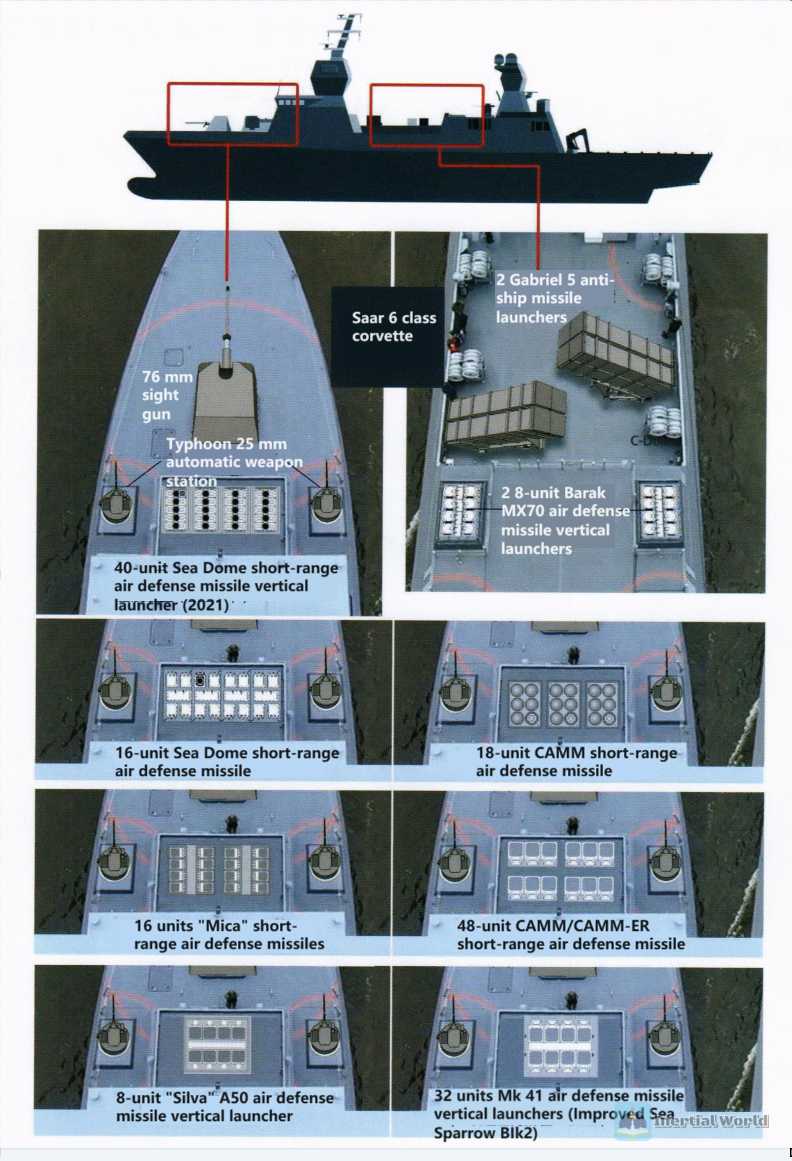
3. Anti-submarine weapons. In 2011, the Egyptian Navy and the German HDW Kiel Shipyard signed an agreement to purchase two new 209/1400 submarines. The two parties signed an agreement in 2015. In 2017, a contract for two more submarines of the same type was signed, and all four submarines have been put into service. The Egyptian Navy has narrowed the gap with the Israeli Navy’s submarine force in one fell swoop. In addition, Algeria, a North African military power, is also equipped with advanced Russian-made improved Kilo-class submarines. In addition, the navies of Saudi Arabia, the United Arab Emirates and other countries are also seeking to obtain submarines, an underwater weapon with extremely strong deterrent power. These underwater threats have greatly touched the sensitive nerves of the Israeli army. As one of the countermeasures, the Israeli navy has strengthened the anti-submarine combat capabilities of the "Saar" 6. At present, the Israeli army has not announced detailed information such as the sonar model and anti-submarine torpedo launch system used by the "Saar" 6, but it is clear that the ship will be equipped with Lockheed Martin’s SH-60 "Seahawk" helicopter. It has first-class submarine search and attack performance, can independently complete anti-submarine and anti-ship combat missions, and can also perform vertical replenishment, search and rescue, reconnaissance, relay guidance, sweeping/mining special combat support and other tasks. It is the most widely used high-performance medium-sized multi-purpose ship-borne helicopter in Western countries. The "Saar" 6 is the first Israeli surface combat ship equipped with a 10-ton helicopter, which will further enhance the multi-task flexibility of the entire ship.
Powerful passive interference capability is a major feature of Israeli naval surface ships. It has achieved outstanding results in many Middle East wars. The "Saar" 6 naturally "inherited this family gene. The whole ship is equipped with up to 3 72-unit "Desivir" rocket jammer launchers, which are installed on the decks on both sides of the bow vertical launch device and on the top of the hangar behind the rear mast. It can be seen that even in today’s world where various means of countering anti-ship missiles are already very rich, naval surface ships still adhere to their "beliefs" and use densely arranged chaff jammers to gain a sense of security on complex battlefields.
Looking at the weapon system configuration of the "Saar" 6, the significant enhancement of armament performance is the highlight of the combat capability improvement. Its most distinctive feature is the increase in the interception capability of non-traditional air strike weapons such as rockets at close range, followed by a significant improvement in sea strike capability. The luxurious combination of the longer-range "Barak" 8 air defense missile + "Sea Iron Dome" rocket interception system + 16-unit "Gabriel" 5 anti-ship missiles makes its comprehensive combat capability close to the current destroyers and frigates of the Eurasian naval powers, and can meet the more complex battlefield mission requirements in the Middle East. Although the entire ship’s strike and defense systems are densely arranged, under the exquisite layout of German shipbuilding companies, it does not give people a sense of stacking, but instead reflects a reasonable, orderly, and well-structured mature industrial aesthetic, which is very worthy of learning and reference by the ship industry design departments of emerging developing countries.
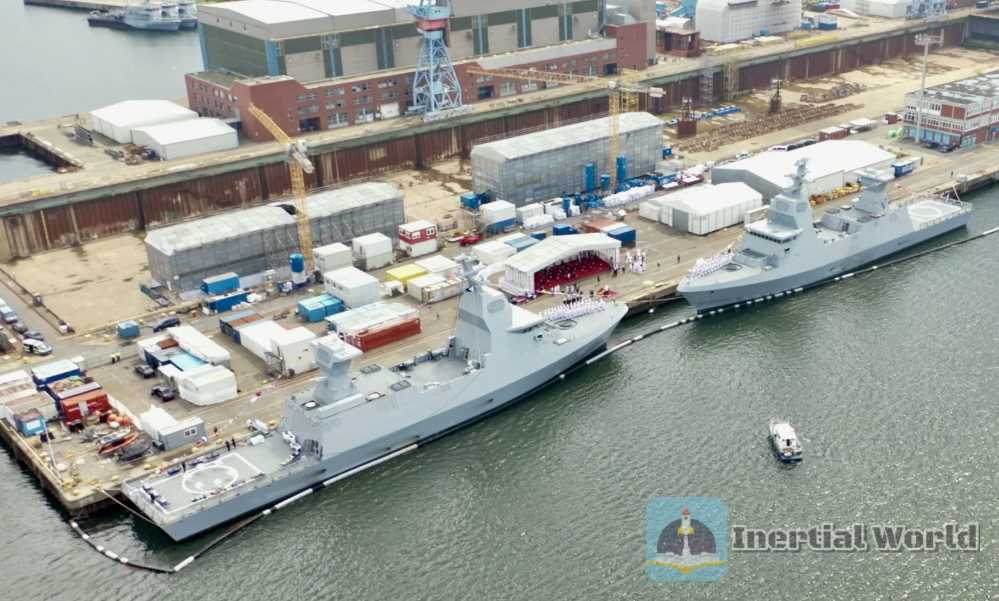
Radar and electronic systems
The radar and electronic systems are the essence of the "Saar" 6 design. Relatively speaking, the newly equipped phased array radar system is more eye-catching than the increase in firepower density. As the core combat power of the "Saar series", the extremely outstanding performance of radar and electronic systems is an important factor in measuring its comprehensive combat capability. It will be valued on each generation of "Saar" ships. The phased array radar system that has been adopted in the "Saar" 5 modification will be further inherited and optimized on the "Saar" 6. Its core is the EL/M-2248 S-band active phased array radar and EL/M-2258 S-band high-precision sea search and early warning radar developed by Elta, a well-known Israeli military electronic system company.

EL/M-2248 The radar is limited by the size of the mainmast and is forced to be dispersed. Three fixed arrays are installed in the front, left and right directions of the mainmast on the top of the bridge, and one array is installed in the rear direction of the rear mast on the top of the hangar to achieve 360° coverage. The area of the radar array is also larger than the EL/M-2248 radar used in the "Saar" 5. The pitch detection range of this type of radar is -20°~ +85°. After the improvement, its fire control system software can detect and identify multiple types of targets, and can detect and track hundreds of air targets at the same time. The radar can automatically track anti-ship missiles flying over the sea within 25 kilometers, and the detection distance for rockets is more than 100 kilometers. Its biggest feature is that by greatly optimizing the combination of T/R modules and back-end equipment, the volume and weight of the radar equipment are minimized while ensuring performance. The overall size and weight control are very good. It has been adopted by the Kolkata-class destroyers of the Indian Navy, and the "Saar" 5 The upgraded version also added this radar system, which fully verified its excellent platform adaptability.
The EL/M-2258 radar is planned to be installed on the top of the rear mast. It was first installed on the "Saar" 4.5 and "Saar" 5, used for sea search and providing guidance information for weapons, with a pitch detection range of -20°~ +70°
The superior performance of the two radars allows the commander of the Israeli naval fleet to understand the sea and air situation in the sea area more comprehensively than the opponent. The rest of the electronic equipment basically follows the mature models used by the upgraded "Saar" 5, such as NS-9003, NS-9005 series of electronic warfare devices.
The best in its class
As a model of a small country navy, the Israeli navy is indeed unique. Its equipment is complete and reasonable, its performance is advanced, its scale is small but it is efficient and capable, it does not blindly believe in and pursue the advantages of large tonnage, and it always adheres to the development concept close to the actual national conditions and the gradual and orderly path, and finally becomes a school of its own, which is really commendable.
From the overall performance of the platform, the "Saar" 6 inherits the tradition of the "Saar" series with both high performance and heavy firepower, and exquisitely combines the excellent German ship platform with Israel’s superb electronic equipment and weapon systems, making it difficult for potential opponents not to be highly wary of it. The "Saar" 6 type still continues the high level of German manufacturers and is very suitable for the battlefield needs of the Israeli Navy. However, compared with the previous single-dimensional improvement of weapons and electronic system performance of ships, the "Saar" 6 type focuses more on optimizing the overall functional upgrades such as navigation performance and habitability, focusing on reducing the cost of use and maintenance, so that the navies of small and medium-sized countries can also maintain a surface fleet with strong combat effectiveness, laying a technical and cost advantage for seizing the export market in the future. From the subjective feeling of the "Saar" 6 type, its improvement in radar electronics, weapon systems, etc. is certainly eye-catching, but what is more impressive is the details of the overall performance improvement, which often make people sigh: "Well, although this type of battleship is small in tonnage, its performance is very powerful."
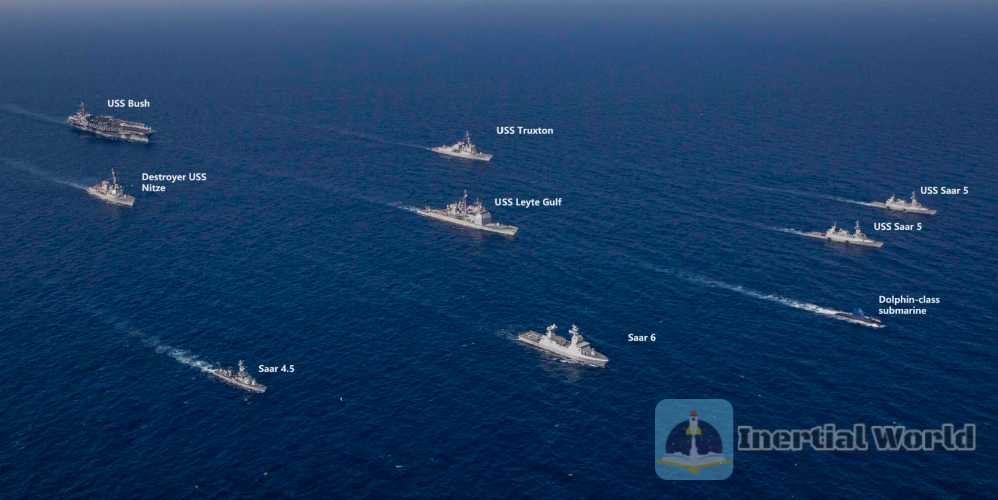
Postscript
Looking at the development of the entire "Saar" series of missile boats/corvettes, including the 9 "Saar" 4-type ships built by the South African Navy, a total of 48 "Saar" series ships were built, forming a huge "family", including: 12 "Saar" 1/2/3-type ships, 19 "Saar" 4-type ships, 10 "Saar" 4.5-type ships, 3 "Saar" 5-type ships, 4 "Saar" 6-type ships, a total of 7 models, which have undergone multiple upgrades. Among the large and medium-sized missile boat series in the West, its construction quantity is second only to the French "Woman Warrior" type and the German TNC type. In its long development history, it has gradually grown into a family with regional characteristics among the naval missile boats of various countries. Almost every one of its models has experienced the baptism of war. Their development is orderly, closely linked to demand, and gradual. They do not blindly pursue high cost and high performance. They have both inheritance and innovation, and both self-research and imports. They are one of the best representatives of Israel’s weapon systems that are in line with its own development environment. This down-to-earth and innovative spirit may be the reason why the Israeli army has been able to gain a foothold in areas surrounded by war for a long time.


